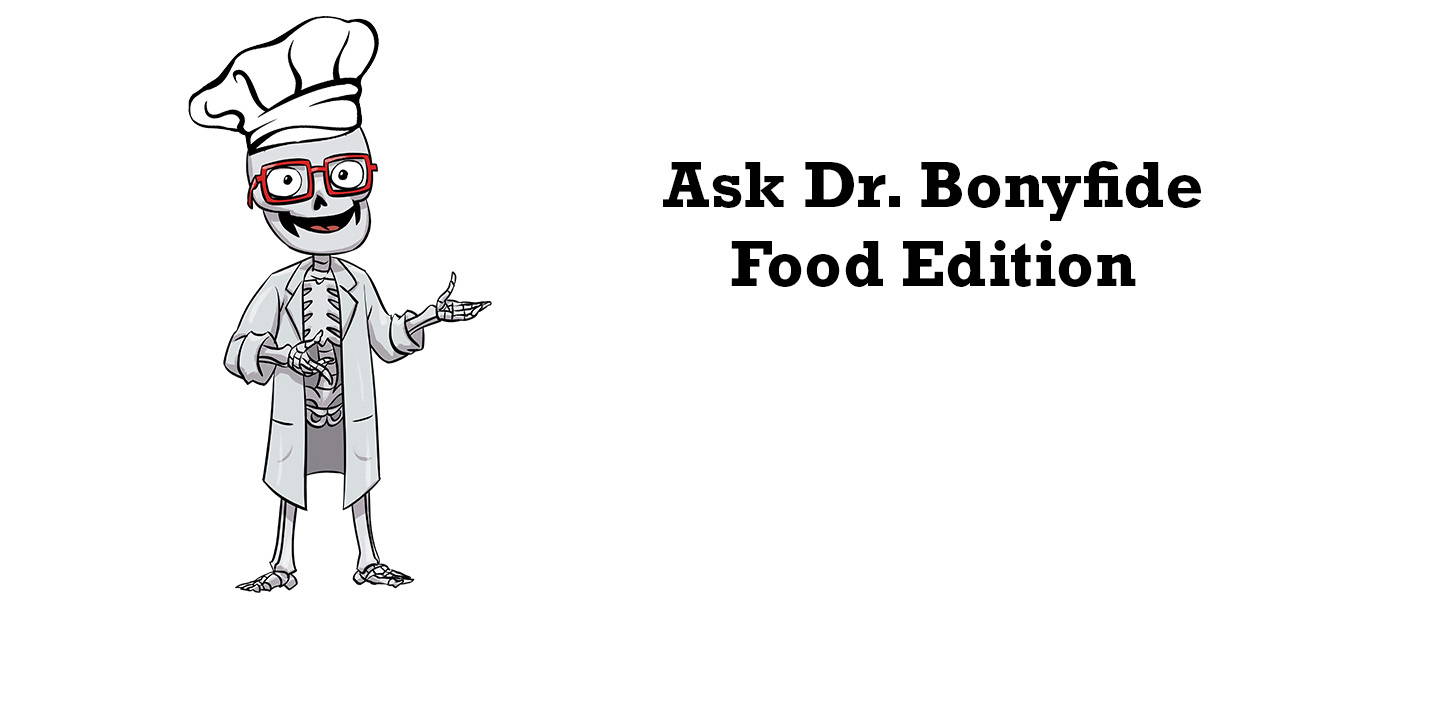
Bonne journée, adventurers! We spend so much time learning about our bodily machines, it only makes sense to take a look at the fuel they run on -- food! This week, as usual, our young adventurers are hungry for knowledge, and I’m excited as ever to dish it out! In discussing nutrition, the scientific mumbo-jumbo can get dairycomplicated, so I’ll try not to milkit and keep the info nice and palatable. Anyway, enough stalk -- let’s get down to the meat and potatoes!
What’s the point of food groups and who decided what foods go where?
Yes, there have been many versions of food groupings throughout the years. Your parents might be familiar with the food pyramid and you might recognize theMyPlate model. Even though we’ve come aroundto the plate shape, the pyramid did have apoint! It all comes down to our need for a diverse supply of nutrients.
You’ve probably heard the phrase “one cannot live on bread alone,” -- at this point it’s practically engrainedin us. The expression has lasted through the ages because it’s true - there is no single food that will give you all the nutrients you need to thrive. As you’ve seen in our Adventure Series, vitamins help your immune system while proteins help you grow, while carbohydrates give you energy, and so on. You need all these to stay healthy, but how can we communicate that to the public? Well, there are two ways. One way is to say, “Alright people, you need 700-900 micrograms of Vitamin A in a day. Get on it.”
The problem here is that everyone then starts looking for their microgram measurer and searching for the Vitamin A store (which you won’t find in your local mall). The other way is to say “Make sure you eat a healthy amount of cheese, yogurt, eggs, or oily fish to boost your Vitamin A.” This is far easier to do -- we all know where the cheese and eggs are. By creating food groups, we categorize foods based on which nutrients they provide. And by creating the visual (like the pyramid or plate), we can get an accurate sense of what portion sizes we’re shooting for.
Who, then, is responsible for these ever-changing models and which should we follow? In the United States, it’s the Department of Agriculture (USDA) that keeps us informed about our food groups and recommended daily servings, and the models change because science is constantly evolving to include the most up-to-date nutritional research. The first dietary guide by the USDA was created in 1894 by W.O. Atwater to tell American farmers how much protein, carbohydrates, fats, and “mineral matter” they should be eating (“mineral matter” was their word for vitamins because they hadn’t yet figured out how those work). In 1916, the nutritionist Caroline Hunt publishedFood for Young Children, the first USDA food guide, which separated food into milk/meat, cereals, fruits/vegetables, fats, and sugars. Since then, the USDA diet plans have changed as research on nutrition has developed. As such, you should be looking at the most recent food plan (currently MyPlate) to decide how to create a healthy diet. More changes are sure to come as researchers learn more, and we should stay ready and patient -- these folks have a lot on their plate, and we don’t want them to bite off more than they can chew!
If junk food is junk, then why does it taste so good and healthy food taste so bad?
Alright, look -- junk food is tasty, and I’m not here totrash it! But facts remain facts, and those yummy sweets aren’t good for you. Given that, you’d think your body would be putting on signs to make you spit out the potato chips, not scarf down more. For this little paradox, we can all go ahead and blame society. It’s a great big modern world out there, and your body is still running an old model.
Let's take a look back in time... food was harder to come by than it is now -- you couldn’t casually step out to hunt a deer every evening and make it home in time to catch the nightly news. Humans needed to seek food that carried a lot of energy so they could store it away for times when there wasn’t food available. The most energy-rich foods are the ones that are high in fats and carbohydrates -- we call that propertycaloric density -- which you can find in cookies, potato chips, pizza, ice cream, and everything else that’s so devilishly delicious.To motivate our ancestors to find calorie dense foods, their bodies rewarded them with the satisfying taste and a couple of nice dopamine hits (Say it like this: DOPE-uh-meen). Dopamine, you may recall, is the neurotransmitter that gives you pleasure (Learn more about neurotransmitters in our Adventure 11 blog post). We still get these dopamine hits from carbs and fat, but live in a world where accessing food is much easier- we can just take a stroll down to the corner grocery, which burns waaaaay less calories than hunting for our food. Alas, the fat and carbs we love so dearly don’t help us the way they used to.
This is not to say that fats and carbs should be avoided at all costs-- both are necessary food groups. Carbs, as we’ve seen, give us energy, and fats help our bodies absorb nutrients. Our diets go off-balance when we eat these foods in excess or pair them with high amounts of sugar. Eating sugar causes our body to switch from fat burning mode to sugar burning mode, and the fat gets stored away for later. Instead, sugar causes our blood sugar to spike which makes us produce insulin. As a result, our blood sugar levels drop very suddenly which makes us...guess what? Crave more sugar! Sugar addiction wasn’t an issue for our ancestors because there wasn’t enough of it to get addicted to, but when you have a jar of the stuff on your kitchen counter, it can get awfully tempting. This isn’t to say that desserts aren’t okay once in a while. They’re fine in small amounts, but too much can be bad news -- I’m not going to sugarcoat it!









Leave a comment (all fields required)